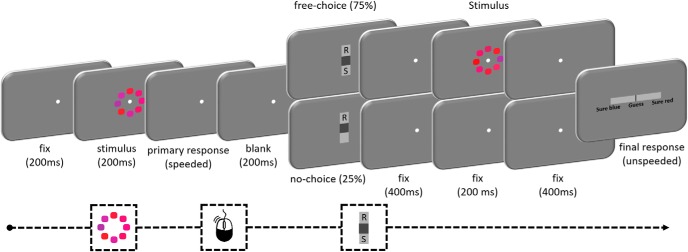Figure 1.
Timeline of an experimental trial. A stimulus was presented for 200 ms, and participants made a speeded response with the mouse, deciding whether the average color of the eight elements was red or blue. On free-choice trials (75%), participants subsequently used a vertical slider to choose either to see the stimulus again in an easier version (by moving the gray cursor toward S) or to give their response (by moving the gray cursor toward R). When the stimulus is shown again, the mean of the eight elements is more clearly red and the variance is smaller (note that the displayed change is exaggerated for illustration purposes). On no-choice trials (25%), participants could only choose to give their response. Finally, on all trials, participants jointly indicated their final response and level of confidence on a horizontal continuous response scale. Being accurate was rewarded (5 points), errors were punished (−5 points), and there was a small cost associated with sampling more information (−1 point).

